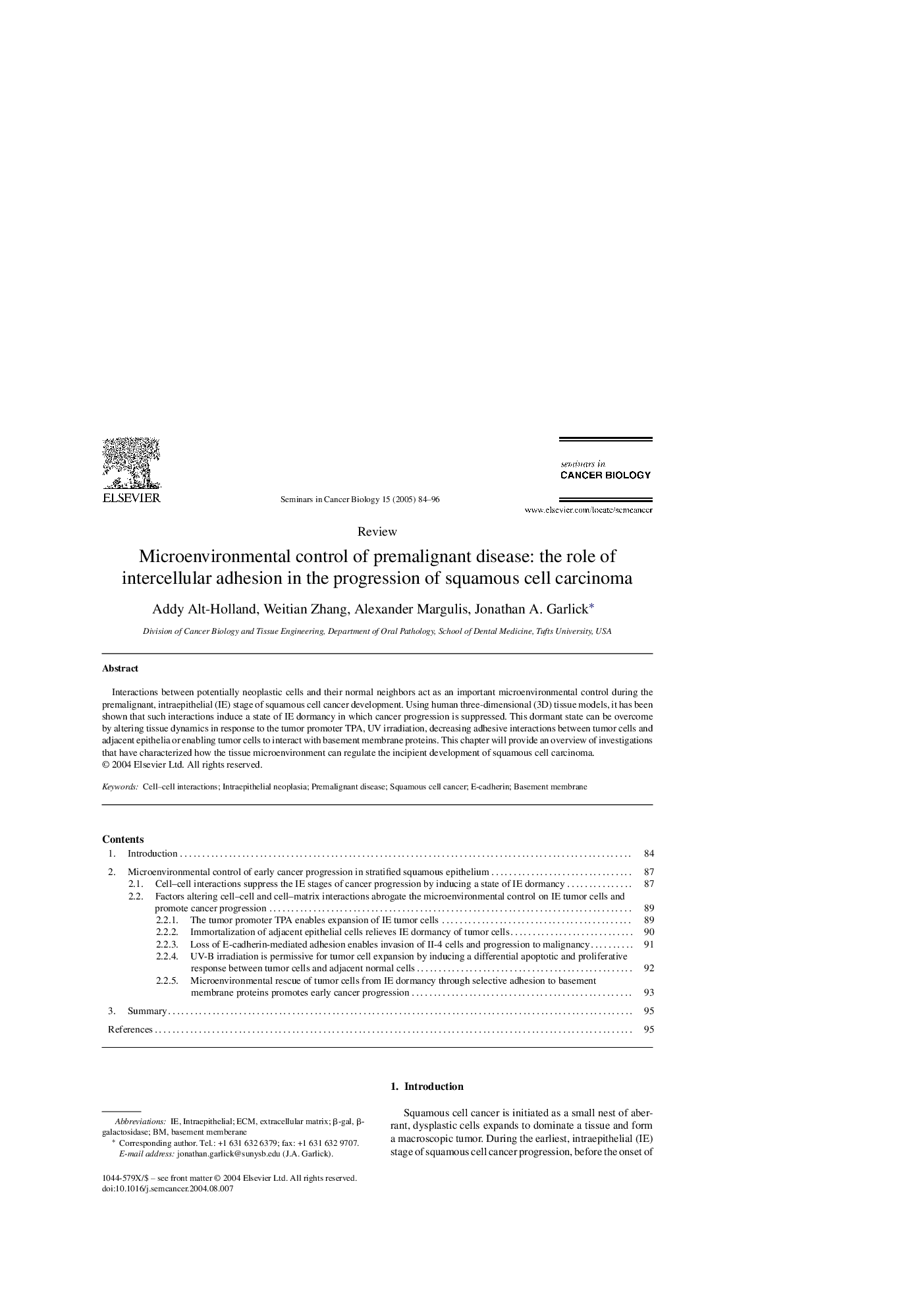| Article ID | Journal | Published Year | Pages | File Type |
|---|---|---|---|---|
| 10845845 | Seminars in Cancer Biology | 2005 | 13 Pages |
Abstract
Interactions between potentially neoplastic cells and their normal neighbors act as an important microenvironmental control during the premalignant, intraepithelial (IE) stage of squamous cell cancer development. Using human three-dimensional (3D) tissue models, it has been shown that such interactions induce a state of IE dormancy in which cancer progression is suppressed. This dormant state can be overcome by altering tissue dynamics in response to the tumor promoter TPA, UV irradiation, decreasing adhesive interactions between tumor cells and adjacent epithelia or enabling tumor cells to interact with basement membrane proteins. This chapter will provide an overview of investigations that have characterized how the tissue microenvironment can regulate the incipient development of squamous cell carcinoma.
Keywords
Related Topics
Life Sciences
Biochemistry, Genetics and Molecular Biology
Biochemistry
Authors
Addy Alt-Holland, Weitian Zhang, Alexander Margulis, Jonathan A. Garlick,
